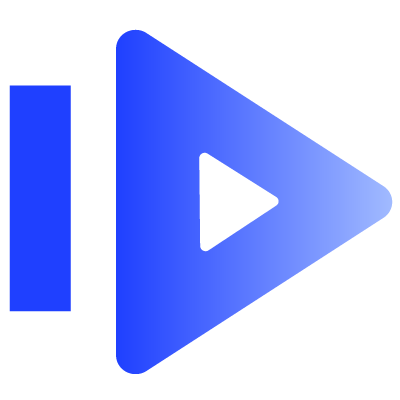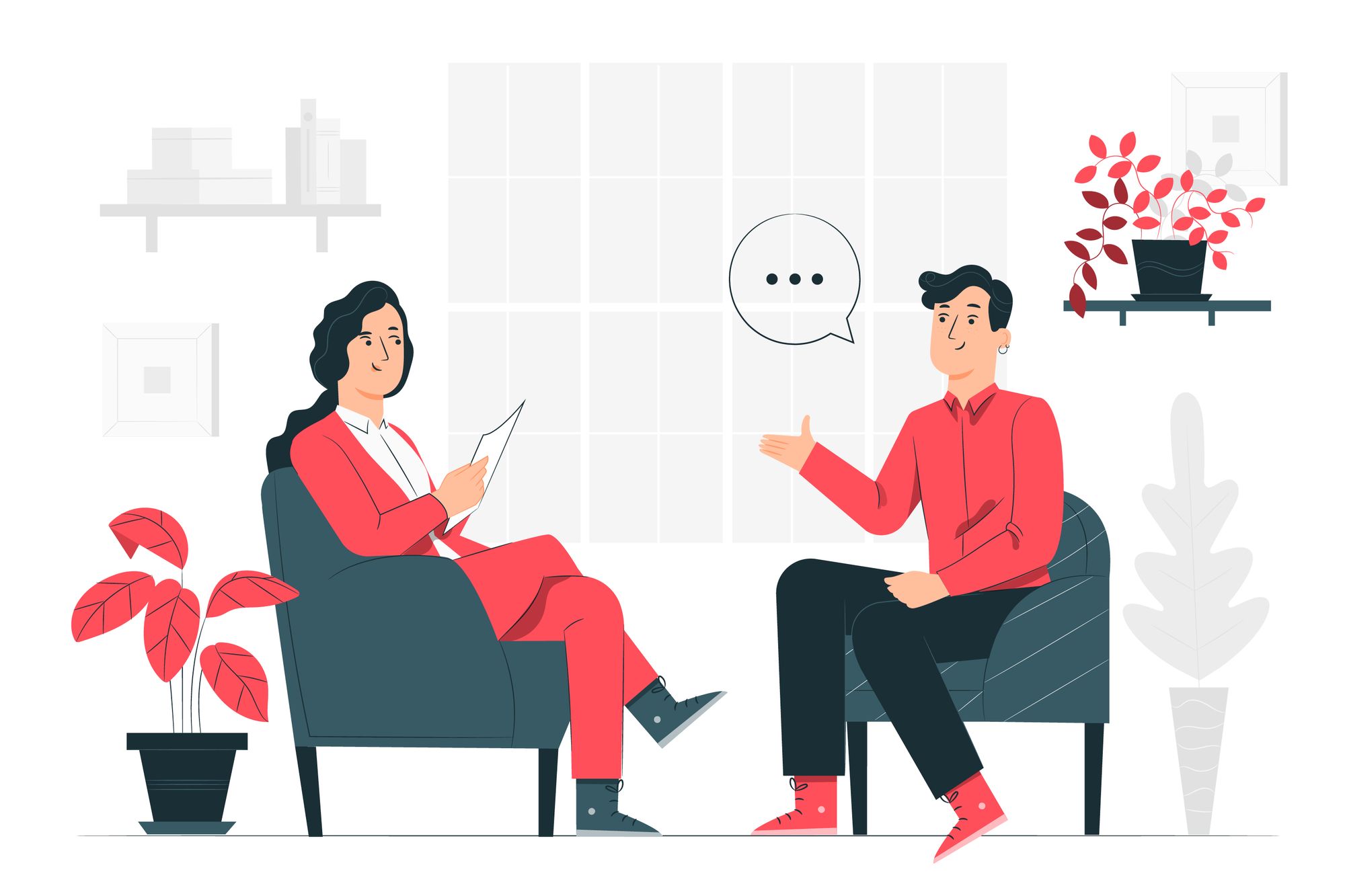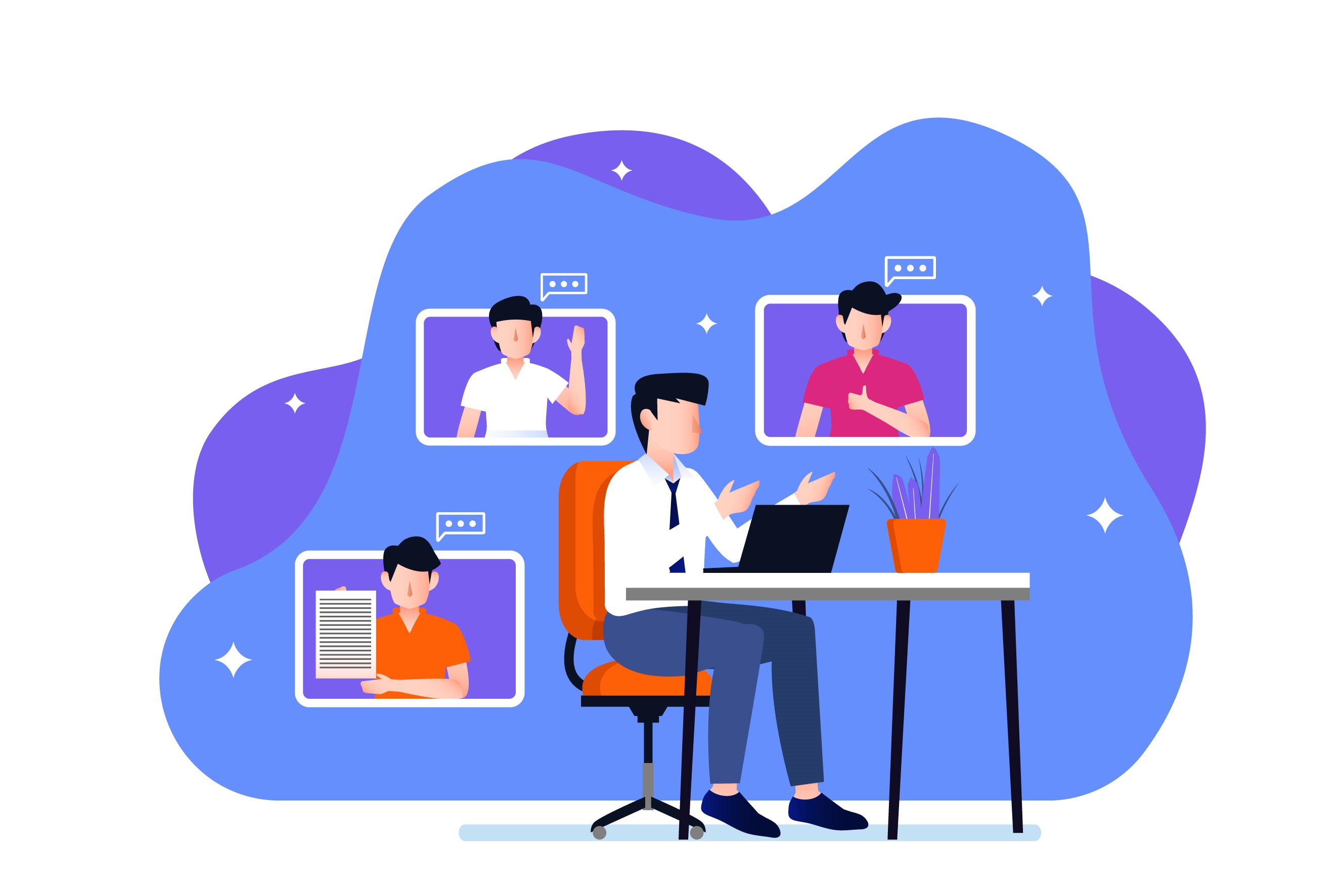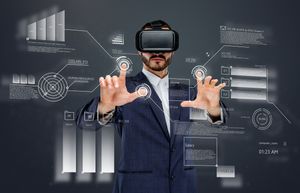This is the ultimate guide to create interview videos in 2021, let's dive right in.
What are Interview Videos?
Interview videos in their broadest sense is a recording of a conversation between two people, the objectives of an interview include broadcasting the knowledge of an interviewee to a broader audience, trying to know the interviewee better and establishing a connection between the interviewee and the audience.
Where to Use Interview Videos?
Interviews are shot and shared to serve a variety of purposes, from a business standpoint interview videos are a rich source of content, they can be released as a whole to an audience, snippets from the interview can be used for promotional purposes and the transcript can be repurposed into a blog post.
Interview videos can be used for brand affinity and lead generation, in a business context. They are usually conducted with a subject expert or a industry leader, video interviews are a great way to introduce your product/service to a new audience.
When you record a video interview with an expert, you get two types of audience to your videos. One is your existing loyal audience and the one that you market this video to. The other set of the audience comes from and for the subject expert.
Every subject/ industry expert has their following that is hungry for their share of knowledge and wisdom. And if you conduct an interview video with an expert, be sure to have a good enough call to action button for this new audience. Because they are sure to be prospects any time soon.
Salesforce uses interview videos with experts to bring forth their perspectives on business situations across the world. They have an ongoing video series called Fireside Chat. Here is a video from this series, an interview with Arundhati Bhattacharya, CEO of Salesforce India:
Further, interview videos can be used for processing appraisals, and for clients (testimonials) to record their journey. A lot of marketers also interview employees to create a company culture video.
There is no end to how you can use the interview video format. They work for every department, every industry beyond boundaries.
Types of Interview Videos
Video interviews can be classified into the following categories:
Conversational:
Interviews on talk shows tend to lean towards a conversational style, they are more laid back and are shot with the intention of making the interviewee relatable, Conversational interviews are shot more for the purpose of entertainment hence the setting and questions are designed accordingly.
Walking interviews:
These are siimilar to talking interviews the only difference is that it involves movement in an environment which is either neutral or belongs to the interviewee; the movement aspect poses logistical challenges, however the output is an interview that is more “everyday” in nature. Walking interviews are also a great way of capturing the interviewee in his/her element which in turn puts the person at ease.
Interviews Combined with Activities:
An extension of the walking interview is an interview combined with an activity, it can be as simple as having a beverage or giving a house tour. These interview formats are more engaging since there are multiple elements that capture attention in a dynamic environment. The only caveat here is that the activity shouldn’t overpower the actual interview rather it should improve the flow of the interview. These interviews are also shot with a more casual audience in mind.
Talking Head:
Moving on to a more serious type of interview, talking heads are meant for serious conversations with people of gravitas. They are shot in a professional setting with the focus solely on the subjects. The objective of such interviews are to discuss serious topics or know more about a particular topic through the interviewee who is an expert.
Remote Interviews:
Remote interviews are the least challenging in terms of logistics. Unlike the other interview types they can cater to a variety of audiences just by modifying the content. As discussed in much detail later it is essential to have a reliable internet connection, clear audio and adequate lighting before recording a remote interview.
How to Create Interview Videos
Step 1: Create a Set of Well-defined Goals
Why are you recording this interview video? Who is supposed to watch this and why?
These are the questions you need to answer before you begin recording. If you are creating videos for recruitment, then your goals will look like this:
- Generate a point-by-point assignment-based video for candidates.
- Create brand awareness through employee testimonials for recruitment platforms.
These are the goals that will guide you every step of the way.
Step 2: Prepare Your Questions Wisely
When it comes to the questions they ask, interviewers can become superheroes, or be ridiculed for life. Oprah and Dr. Phil, both are interviewers with questions. Pick who you want to be. Even Donald Trump was hosting interviews at one point.
As an interviewer, your job is to frame questions in such a way that the candidate feels challenged, not threatened. And avoid any easy yes or no type questions. For that, you can create forms.
Step 3: Gather all the Equipment You Shall Need
For remote interviews:
Considering remote interviews, both the interviewer and the candidate need a webcam and a microphone.
Webcams are attached to most laptop devices today, and phones are a good enough substitute for candidates. Interviewers, however, should purchase a decent enough webcam if they don’t have one already.
For microphones, you can either purchase a Bluetooth mic or a USB mic, both are cheap and easily available.
For interview videos:
In case of interview videos shot on location, the set up is more elaborate, the key here is to have the backdrop match the mood and tone of the interview. The location where an interview is shot will affect the way the audience receives and interprets the message. It’s best to avoid backdrops that stand out, For eg. a bookshelf with prominently stacked books will have the viewers trying to read the book titles than concentrate on the interview.
Interviews shot on location are more engaging, authentic and provide a better end result, however if you are unable to film in a specific location, a greenscreen is the next best option.
Moving on to the other equipment, it’s essential to have a solid video and audio recording system in place. For video cameras here are the best available options. As for audio recording there are two options, you can choose between either a shotgun microphone or a lavalier microphone,
An ideal set up should include both since that would guarantee that there’s one backup source if the other one fails. For a more in depth look into a professional audio recording set up you can refer to this blog post by Stillmotion. The final piece of essential equipment is good lighting source, the most commonly used lighting system is a three point lighting system, this includes a backlight, fill light and a keylight . You can read more about equipment to improve video quality here.
Step 4: Choose a Video Telephony Software and Recording Tool (for remote interviews)
Much like phone calls, video telephony works on a particular platform. And for you to conduct an interview, both you and the interviewee must have the same platform to engage.
There are many cheap and free-to-use options out there like Google Meets, Zoom, Skype, etc. Pick yours based on preference, and comfort.
All that’s left for you to do is now hit record. In case of a live interview, schedule a favorable time, and do remember to turn your phone off. Ask your interviewee to do the same. Dress up as best suited for the interview, generally, a shirt would do, but follow whatever suits your industry’s protocols.
Videotelephony software will give you a platform to conduct the interview, and a screen recording tool will enable you to record the interview.
For pre-recorded interviews, you can use the StoryXpress Screen Recorder. Using this simple tool you can record your screen as well as your webcam to show candidates exactly what a certain assignment demands.
Using StoryXpress you can also record live interviews, which later can be shared with different department heads, or recruitment team members. Consider recording your interview videos as a crucial step. This supports the many benefits of interview videos listed above.
Step 5: Edit Your Videos to Perfection
Given the conversational nature of video interviews, especially live video interviews, you will require an easy-to-use video editing software that trims parts of your videos without much hassle.
Lucky for you, StoryXpress Screen Recorder is a well-rounded, wholesome screen and webcam recorder that lets you edit videos easily. This includes trimming, blurring, annotating, adding call-to-action, and much more.
If you are creating a video series of interview videos, then you might want to add a signature outro, intro for your video interviews. This is like a video form of your logo, it represents your brand and the series.
Further, using StoryXpress, users can also add visuals via screen recording for recruitment videos. Even candidates can record their screen to show exactly how they went about solving the assignments as given by you. And these can be shared easily with the ad-free, premium hosting environment provided by StoryXpress.
Interview Videos: Best Practices
Keep the Tone Conversational
With interview videos, you are directly talking to an individual or a group. So there is no reason to have a broadcast, announcement-type appeal. It is best to make the interview into a conversation.
This holds even for recruitment videos. Engage with your candidates on a personal level, make small talk. But do this without deviating from the script.
Conduct Practice Interviews
Practice interviews are a great way to give yourself, and your interviewee a hang of video interviews. It is a great way to test your equipment and tools. As well as address any discomfort between the interviewer and interviewee.
You can conduct multiple practice interviews until you feel confident enough to record one. For pre-recorded interviews, you can create multiple recordings and get these approved by an internal team before you put them out there.
Don’t Make Your Interviewees Uncomfortable
The idea of practice interviews is not just to test equipment but make sure the interview runs smoothly. One of the biggest no-nos in interview videos is asking questions that the interviewee might not be comfortable with.
These could be personal questions or questions that are outright disturbing. Discuss the interview questions before the interview with the interviewee. And when it comes to recruitment interviews, don’t go too deep into personal details.
Match Your Framing and Setup
A good way of ensuring good-looking interview videos is by matching the framing and setup for both the interview and interviewee. It just looks a lot better than random setups combined in one final video call frame.
There you have it, everything you need to know about interview videos.
Hope this serves as a complete guide for you to create good quality interview videos for your audience, and candidates.
For tips on creating good quality recruitment videos, check out this blog post.
Add Footage that is Shot Not as Part of the Interview
The video interview process tends to weigh down on the interviewee unless he/she is a professional who has a lot of interview experience. Due to this reason most interviewees tend to talk in a more relaxed manner once the interview is done, the footage thus obtained can be used as intro or outro snippets or as cold opens for the interview video.
Try to Minimize Background Noise
One of the challenges of shooting videos in an “everyday” setting is the background noise, this can be overcome by either using light background music or by recording the ambient noise and adding it to the actual interview recording to avoid any irregularities or incoherent noises in the interview video.
Don’t be Afraid to Take breaks or Stop Recording
Video interviews can be unnatural experiences for first timers as a result the conversation might not flow as naturally as expected. In such situations, don’t be afraid to take breaks, refresh and put the interviewee at ease. The same can also be done when the interviewee loses his/her train of thought. The benefit of shooting a video interview is that the best bits can pieced together to create a cohesive end result.
Sample Interviews to Draw Inspiration
Here are some popular interviewers who conduct some memorable interviews whilst ensuring that the interviewee is at ease, analysing these interviews will give you an insight on what makes a successful interview thereby helping you create one.
Any list of great interviewers is incomplete without the mention of Oprah, her interviews are as authentic as they come and go into great detail. She’s not afraid to discuss sensitive topics since she knows how to ease people into conversation and gradually help them open up. This is an essential skill for any interviewer if he/she wishes to go beyond small talk and deliver value to an audience.
On to a more niche example, Ali Plumb from BBC Radio One is known for a series of interviews with actors and thespians, “Movies with Ali Plumb” . His interviews are widely praised for the choice of questions, depth of research and conversational tone. Many interviewees themselves confess that they are most at ease at Ali’s interviews, it’s due to the fact that Ali establishes an effortless rapport with the actors without being perceived to be pandering to them.
We hope this guide has brought you up to speed on how to create a video interview, if you found this guide helpful feel free to share this with others who are looking to create their first interview video.

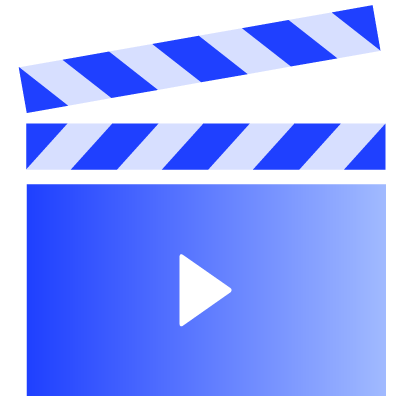
 Free Screen Recorder for Chrome
Free Screen Recorder for Chrome

